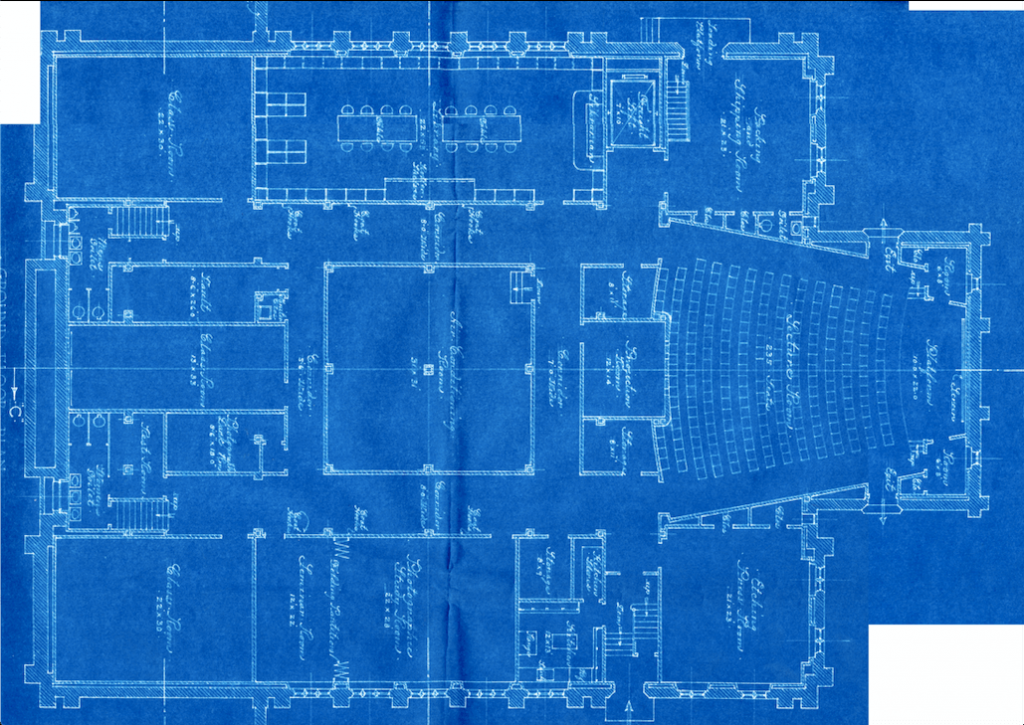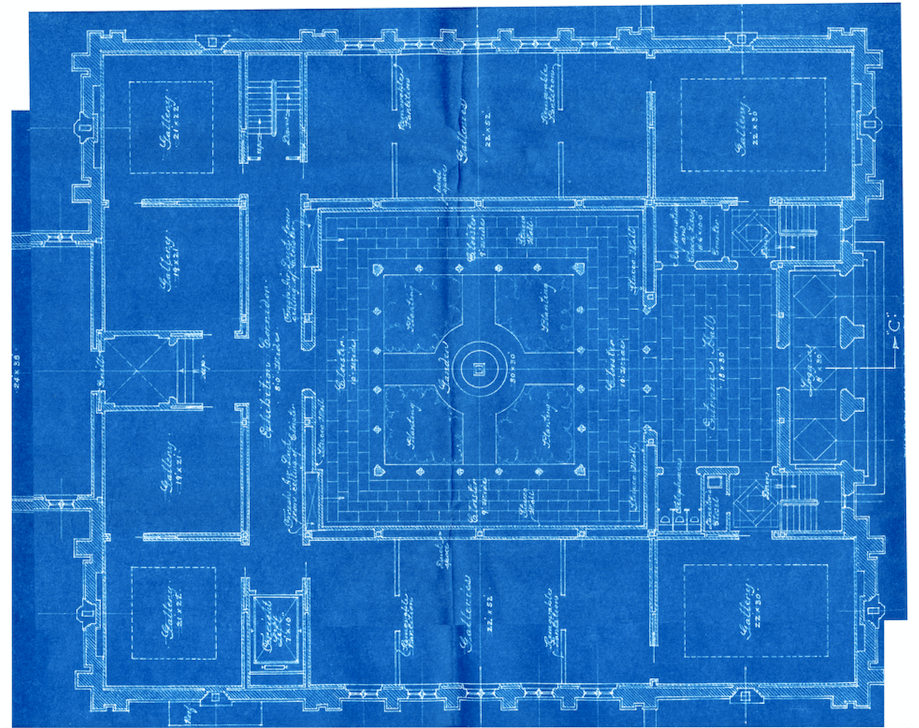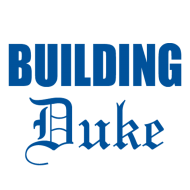There were a good number of proposed buildings and additions to Duke’s campus that never came to fruition. Many sketches and plans have been saved of these unpursued projects, but perhaps the most prominent of these structures is the Ackland Museum of Art. Unlike many of the other proposed buildings, the Ackland went far into the planning stages and lasted all the way to its final blueprints. The final design of the museum had a floor plan for each of its levels as well as its roof and foundation. It also had very detailed height plans showing multiple cross-sections and side views fully displaying its exterior features. The abundance of these plans and location blueprint are excellent references as to where the Ackland would have been and what it would have looked like had it been constructed on Duke’s campus. However, they beg the question as to why it was never even started after so much meticulous planning had been done.


The Ackland Museum of Art started as the dying wish of a man named William Hayes Ackland. In an effort to engrave his legacy in stone, he drew up a will giving the majority of his wealth to his trustees and instructed them to erect a memorial art gallery, where he planned to have his mausoleum housed, without any communication to the educational institutions he planned to involve. He planned to have this gallery constructed in on of three places: Rollins College in Winter Park, Florida, the University of North Carolina in Chapel Hill, and Duke University. Ackland ruled out UNC fairly quickly, as he said he “was disappointed, and did not like public[-]supported universities anyhow.”. However, it is unknown exactly why he favored Duke over Rollins College, as Rollins was far closer to his winter home in Ormond, Florida. His dream and potential funding were received well by the William Preston Few, Duke’s president at the time. He and William Ackland came to keep close contact with each as they began to talk and plan of the proposed art museum.
As they visited and wrote to each other back and forth, Few became adamant to follow through with the project during Ackland’s lifetime. Problems arose, however, when William R. Perkins reviewed the will Ackland had written up and began to raise questions as to the ownership and control that the university would have over the structure and its contents. This led to a few revisions being made to the will and the beginning of construction to be continually postponed. Yet eventually, in 1938, it seemed that everything was in order to begin the erection of the structure, as Ackland had made no opposition to the proposed changes to the will that Few and Perkins suggested. Ackland never did get to see the memorial’s construction due to his passing on February 16, 1940. Although Few kept in touch with Ackland quite often before his death, in the spring of the next year, he learned indirectly that Ackland had written up a new will. One he never showed President Few while he was still alive.
Few and Ackland’s trustees were still confident that the project was going to be brought to fruition, yet when Few informed Perkins of his plans, Perkins gave a stern response opposing the construction of the art museum. Following this response came the opposition from some of William Ackland’s family members, who had received very little of the entirety of Ackland’s estate. All of these events brought much controversy over the proposed Ackland Museum of Art, but the real nail in the coffin came when President Few died of coronary thrombosis on October 16, 1940. While Few would have fought for the erection of the memorial gallery, Robert Lee Flowers, his successor, showed little to no opposition. When the university was brought to court by the children of Joseph H. Acklen over the provisions of Ackland’s will, the university was put under pressure by which they took hasty and decisive action. In September of 1941, the committee of Duke University, clearly led by William Perkins, unanimously decided they would decline all provisions of the Ackland’s will. When Ackland’s trustees learned of this decision, they quickly reached out to Perkins, questioning why this decision was made when President Few was on the brinks of beginning construction.
It was then that Perkins made his opposition to the Ackland Museum very clear.
There was a larger and really more important phase, namely the erection of a mausoleum with a recumbent statue [of] Mr. Ackland on the campus; that while I had nothing to say against Mr. Ackland, whom I had never met, I did have a lot to say as to such a precedent for Duke University and frankness compelled me to tell him that I would oppose to the very utmost any such precedent, and felt that there never had been a time when even Dr. Few could have gotten the sanction of the Trustees for the project set up in the will of Mr. Ackland, as much as
Perkins to Bryson, September 19,1941, Flowers Papers.
Dr. Few was admired and respected.
Duke University would never go on to make an official statement as to why they renounced Ackland’s will, but reasonable to infer from Perkin’s statements that it was the grave of William Ackland that was the death of the Ackland Museum of Art.
Ackland Museum of Art Rendering
With 3D modeling software we’ve been able to make virtual version of the Museum’s final proposed design.

